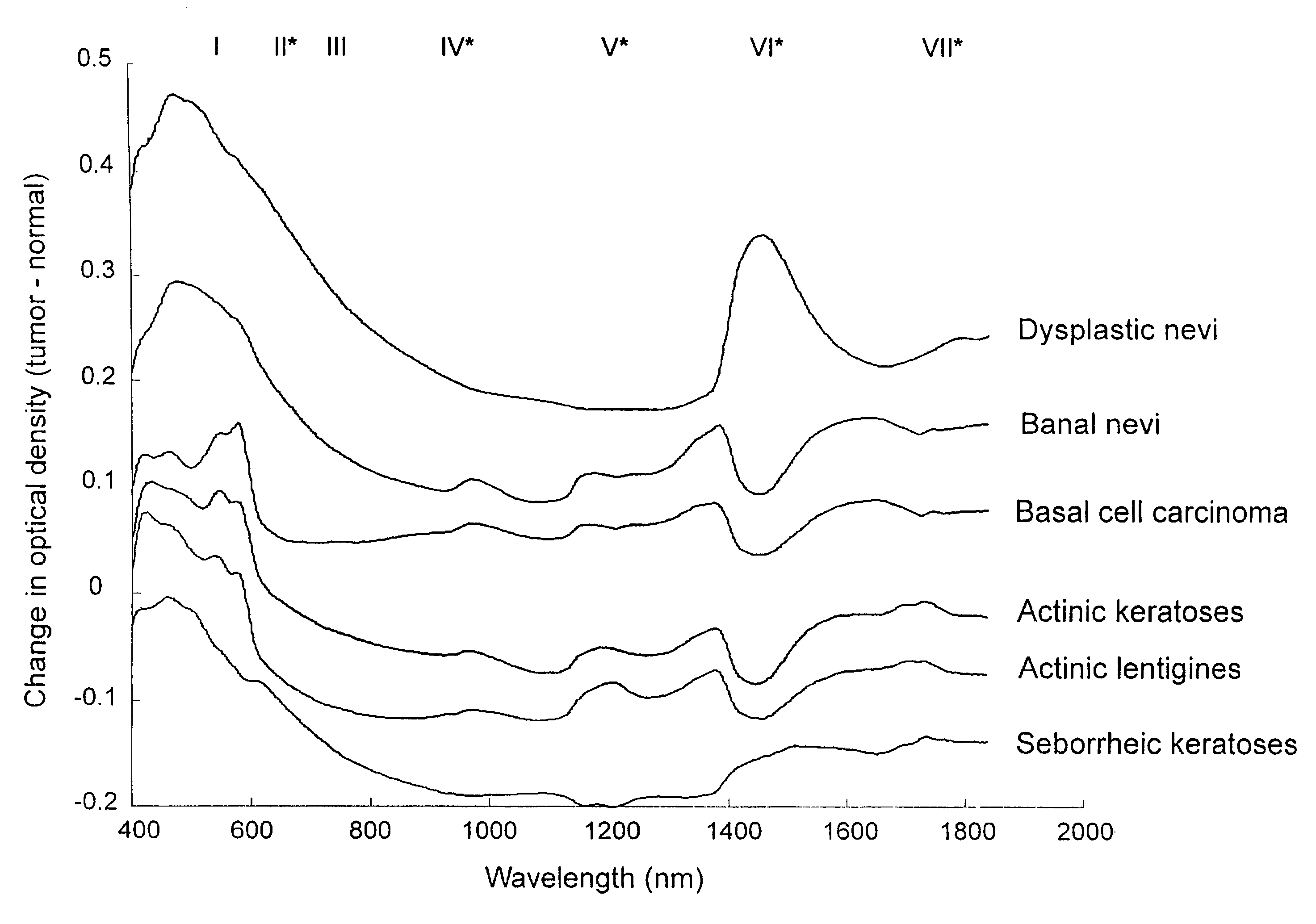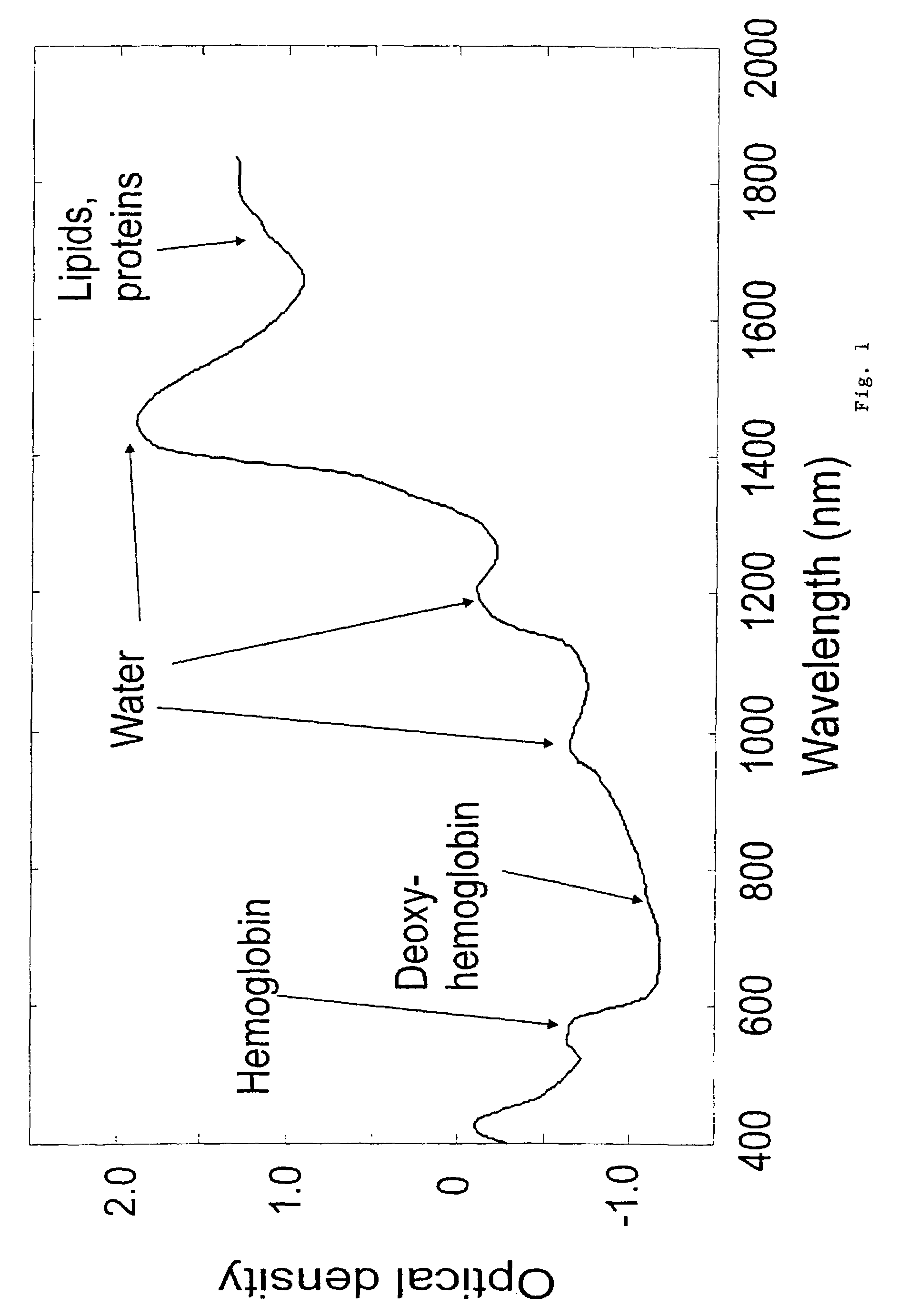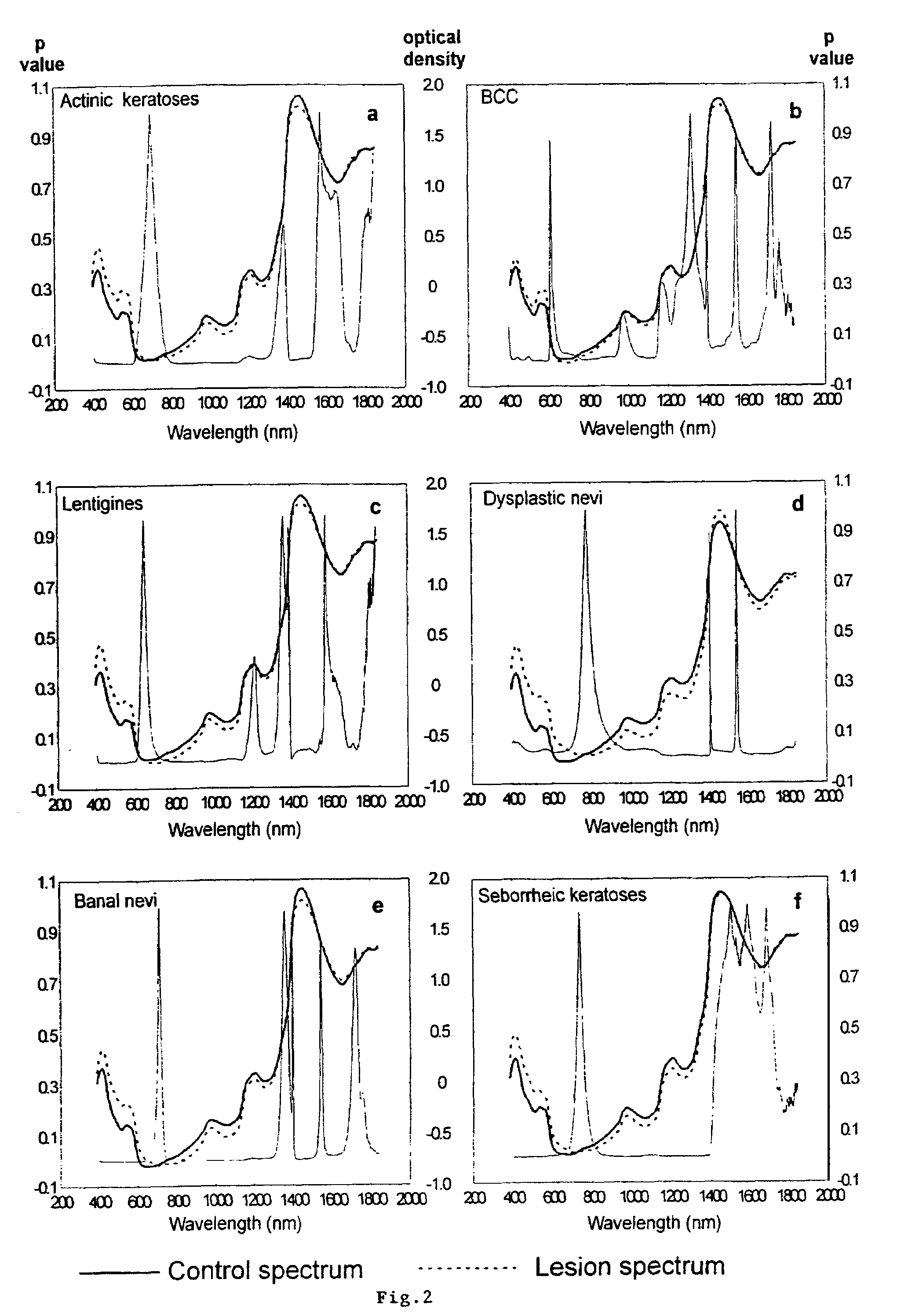Non-invasive screening of skin diseases by visible/near-infrared spectroscopy
a spectroscopy and non-invasive technology, applied in the field of spectroscopy, can solve the problems of limited in-vivo diagnostic potential of mid-ir spectroscopy and difficult clinical diagnosis
- Summary
- Abstract
- Description
- Claims
- Application Information
AI Technical Summary
Benefits of technology
Problems solved by technology
Method used
Image
Examples
example 1
ELECTION
[0038]A total of 195 cases were sampled from a study population of 153 (83 women and 70 men) referred to a dermatology clinic for definitive diagnosis of a skin disease, and for whom proper management necessitated a biopsy of their lesion(s). Upon decision by the dermatologist that a biopsy(ies) was required, the patient was referred to the study nurse and the spectrum was recorded. Subjects were excluded from the study if they: 1) were using any skin medication on the site of the lesion, 2) were presently undergoing radiotherapy or chemotherapy, 3) had either Type I or Type II diabetes (which may alter blood flow in the skin). Following an explanation and discussion of the study, informed consent was obtained. Ethical approval for this study was obtained from the Research Ethics Board of the National Research Council of Canada.
example ii
N OF SPECTRA
[0039]Spectra were recorded in the 400-2500 nm range in 2 nm steps using a commercial spectrometer (Foss NIRSystems Model 6500) equipped with a bifurcated visible / near-IR fiber optic probe with a 7 mm active area. Each reflectance spectrum was collected with a 10 nm slit width, and consisted of 32 scans, which were co-added to improve signal to noise. Prior to obtaining the readings, the subject's skin and the end of the probe were cleansed with 70% alcohol. The fiber optic probe was then positioned 0.5 mm from the measurement site by measuring with a micrometer. For all 195 cases, three (3) visible / near-IR spectra were taken from: 1) the lesion and 2) an area of normal appearing skin (the control site). Acquisition of each spectrum took 40 seconds.
[0040]After acquisition of visible / near-IR spectra, a biopsy of the lesion was taken. Biopsies were sent to the pathologist, and hematoxylin and eosin stained sections of formalin fixed, paraffin embedded slides were evaluated...
example iii
OCESSING AND ANALYSIS
[0041]Significant noise was apparent in the 1850-2400 nm region due to the strong absorption of light by water in that spectral range. Prior to data analysis spectra were therefore truncated to 400-1840 nm, leaving a total of 720 data points per spectrum. Spectra were pooled according to the above 6 lesion categories. Spectra were pre-processed by normalizing to their total area and offset correcting.
[0042]The mean and standard deviation spectrum for each lesion category was generated by calculating the mean (+ / −SD) intensity at each of the 720 spectral data points for each category. Any spectrum that lay outside 2 standard deviations from the mean for each lesion group was removed from the study. It is interesting to note that in all instances spectra that lay outside 2 standard deviations were associated with patient movement as recorded by the study nurse. The remaining spectral database consisted of 94 (of 99) actinic keratosis spectra, 90 (of 96) BCC spectr...
PUM
 Login to View More
Login to View More Abstract
Description
Claims
Application Information
 Login to View More
Login to View More - R&D
- Intellectual Property
- Life Sciences
- Materials
- Tech Scout
- Unparalleled Data Quality
- Higher Quality Content
- 60% Fewer Hallucinations
Browse by: Latest US Patents, China's latest patents, Technical Efficacy Thesaurus, Application Domain, Technology Topic, Popular Technical Reports.
© 2025 PatSnap. All rights reserved.Legal|Privacy policy|Modern Slavery Act Transparency Statement|Sitemap|About US| Contact US: help@patsnap.com



